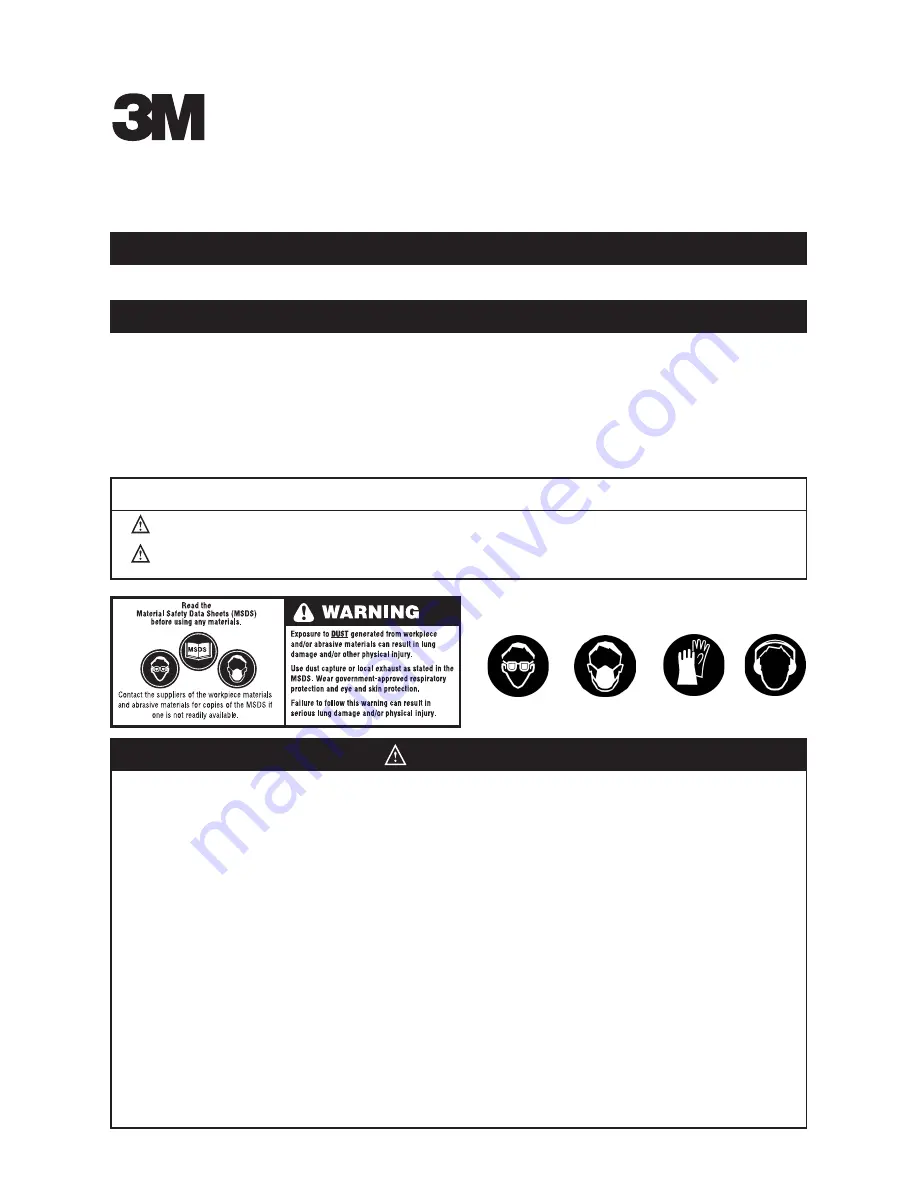
3M 3 in. Random Orbital Polisher
1
Revision 102309
3M 3 in. Random Orbital Polisher
1
Revision 102309
Intended Use
RANDOM ORBITAL POLISHER INSTRUCTION MANUAL
3 in (76 mm) 11,000 RPM
Important Safety Information
Please read, understand and follow all safety information contained in these instructions prior to the use of this tool. Retain these
instructions for future reference.
This pneumatic tool is intended for use in industrial locations, and used only by skilled, trained professionals in accordance with the
instructions in this manual. This pneumatic tool is designed to be used with the disc pad and appropriate 3M foam buffing pads and
with appropriate buffing or polishing compounds or appropriate 3M abrasive discs for sanding/buffing metals, wood, stone, plastics and
other materials. It should only be used for such sanding/buffing applications and within marked capacity and ratings. Only accessories
specifically recommended by 3M should be used with this tool. Use in any other manner or with other accessories could lead to unsafe
operating conditions.
Do not operate tool in water or in an excessively wet application.
Do not use disc pads that have a Max RPM less than the tool Max RPM rating.
To reduce the risks associated with impact from abrasive product, disc pad, or tool breakup, sharp edges, hazardous
pressure, rupture, vibration and noise:
• Read, understand and follow the safety information contained in these instructions prior to the use of this tool. Retain these
instructions for future reference.
• Only personnel who are properly trained should be allowed to service this tool.
• Practice safety requirements. Work alert, have proper attire, and do not operate tools under the influence of alcohol or drugs.
• Operators and other personnel must always wear protection for eyes, ears, and respiratory protection when in the work area or
while operating this product. Follow your employer’s safety policy for PPE’s and/or ANSI Z87.1 or local/national standards for
eyewear and other personal protective equipment requirements.
• Wear protective apparel, taking into consideration the type of work being done.
• Never exceed marked maximum input pressure (90psi / .62Mpa / 6.2Bars).
• Proper eye protection must be worn at all times.
• Tool shall not be operated in the presence of bystanders.
• If you notice any abnormal noise or vibration when operating the tool, immediately discontinue its use and inspect for worn or
damaged components. Correct or replace the suspect component. If abnormal noise or vibration still exists, return the tool to 3M
for repair or replacement. Refer to warranty instructions.
• Never operate this tool without all safety features in place and in proper working order.
• Never over-ride or disable the safety features of the start-stop control such that it is in the on position.
• Make sure the tool is disconnected from its air source before servicing, inspecting, maintaining, cleaning, and before changing
abrasive product.
• Prior to use, inspect abrasive product and accessories for possible damage. If damaged, replace with new abrasive product and
accessories available from 3M.
• Only use accessories supplied or recommended by 3M.
• Never allow this tool to be used by children or other untrained people.
• Do not leave an unattended tool connected to air source.
Explanation of Signal Word Consequences
Indicates a potentially hazardous situation which, if not avoided, may result in death or serious injury
and/or property damage.
Indicates a potentially hazardous situation which, if not avoided, may result in minor or moderate
injury and/or property damage.
WARNING:
CAUTION:
Original Instructions
WARNING
























